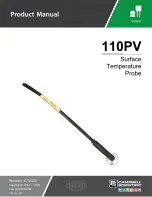
MSM9225B User’s Manual
Chapter 2 Register Descriptions
2 – 8
2.3.3 Identifier 1 (IDR1: x2hex)
This register sets the identifier.
The bit configuration is as follows:
MSB IDB25 IDB24 IDB23 IDB22 IDB21 IDB20 IDB19 IDB18
LSB
IDR1 (x2hex), R/W: R/W
Initial
value:
Undefined Undefined Undefined Undefined Undefined Undefined Undefined Undefined
0
ID18
1
0
ID19
1
0
ID20
1
0
ID21
1
0
ID22
1
0
ID23
1
0
ID24
1
0
ID25
1
Figure 2-4 Identifier 1 (IDR1)
(1) Identifier: IDB25 to IDB18
These bits set the 8 bits of the identifier.
For standard format (IDFM = 0), the lower 8 bits (ID25 to ID18) of the 11 bits (ID28 to ID18) are set.
For extended format (IDFM = 1), ID25 to ID18 of the 29 bits (ID28 to ID0) are set.
At reset, these bits are undefined.
2.3.4 Identifiers 2, 3, 4/Messages 0-7 (MSG0-7 in the case of standard format; IDR2-4, TMSG0-7 in the
case of extended format: x3 to xDhex)
In the case of the standard format (IDFM = 0), the addresses x3 to xAhex (MSG0-7) become the registers for
storing the transmit/receive data.
In the case of the extended format (IDFM = 1), the addresses x3 to x5hex (IDR2-4) are used for setting the
identifier field and the addresses x6 to xDhex (TMSG0-7) are used for the registers for storing the
transmit/receive data.
In either case, the transmit/receive data can be stored up to a maximum of 8 bytes, and it is necessary to set
beforehand the number of bytes that can be transmitted or received by the data length code. (See the
explanation about the data length code (DLC) in Section 2.3.2.)
The contents of these registers after a reset will not be definite.
The bit configurations are shown below.
Summary of Contents for MSM9225B
Page 7: ...Chapter 1 Overview...
Page 13: ...Chapter 2 Register Descriptions...
Page 53: ...Chapter 3 Operational Description...
Page 62: ...Chapter 4 Microcontroller Interface...
Page 71: ...Chapter 5 Electrical Characteristics...
Page 81: ...Appendixes...
















































